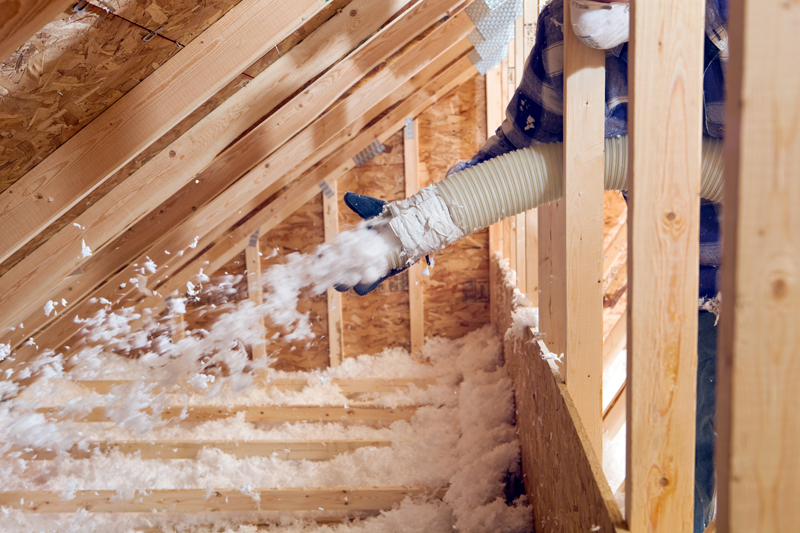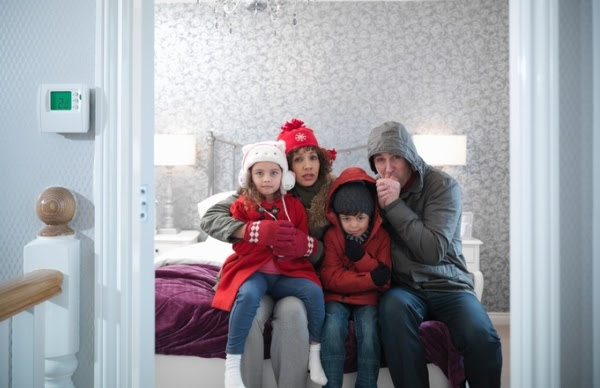Expert Blown-in Insulation Contractor in New York, New Jersey and surroundings
Leading blown insulation installers

A quarter of heat is lost through the roof in an uninsulated home. Insulating your loft, attic or flat roof is a simple and effective way to reduce heat loss and reduce your heating bills.
Get in touch with us or call if you’re ready to begin your insulation project, or keep reading to learn more about cellulose!

Blown-in cellulose insulation in New York – New Jersey
Make an Appointment
Spray Foam & Start Saving Today with Our Spray Foam Insulation Services. Now is a great time to upgrade with Spray Foam insulation.
Target R Value
R-value is a measure of insulation’s efficiency
R-value is a measure of insulation’s efficiency. The higher the R-value, the better the thermal performance of the insulation in locking heat in and keeping heat out, depending on the season. Your recommended R-value will depend on
How to Tell If Blown-in Cellulose Insulation is Installed Right
Cellulose insulation is a loose-fill product composed of pulverized recycled paper treated with fire retardant. Unlike standard fiberglass installed in blankets known as “batts,” cellulose is blown into attics and walls under air pressure through a hose. Cellulose offers a higher R-value — the measure of the capacity to retard heat transfer — than fiberglass. Therefore, less depth is required to produce the specified insulating value. Because cellulose is a loose-fill substance, it can easily be blown into odd-shaped spaces within an attic or wall, generally providing more complete coverage than fiberglass batts that require labor-intensive cutting and fitting to cover all spaces. A typical installation is a two-person job requiring a blowing machine with a hopper to feed the cellulose, plus a 3-inch hose up to 200 feet in length to disperse the insulation.
Are Air Leaks Sealed?
Correct installation begins before cellulose is added. While cellulose insulation retards heat transfer by conduction, it has far less effect on heat transfer by direct air leaks. Sealing air leaks should be the first step of any professional cellulose installation. Once cellulose is installed in an attic, air leaks covered by the insulation may be difficult to detect. These hidden leaks will continue to allow air to flow into or out of living spaces below, wasting energy.
Is It The Correct Depth After Settling?
Cellulose insulation installs as fluffy, aerated material that settles over the following weeks and months. The depth required to achieve the proper R-value is based on the settled depth in inches. A professional installer will calculate proper depth of cellulose insulation by adding no less than a 13 percent allowance for settling. An installation that requires 12 inches of cellulose to reach the desired R-value should have an initial installed depth of about 14 inches to compensate for eventual settling.
Does It Cover Lights?
Cellulose insulation installed in the attic should not contact recessed ceiling lights unless the lights have the Underwriter’s Laboratory IC (insulation contact) rating. Depending on local building codes, before the cellulose is blown in an enclosure may be required over non-IC recessed lights to keep insulation a minimum of three inches away from the fixture. In some locations, cellulose cannot be added to an attic with non-IC lights under any circumstance, necessitating replacement of light fixtures.
Is The Chimney Insulated?
No installed cellulose should contact an uninsulated chimney that passes through the attic. Installers should maintain at least two inches of clearance between the insulation and the masonry of the chimney. Cellulose may be installed in direct contact with the chimney only if the chimney is wrapped with a mineral wool batt to insulate chimney heat.
Are The Wall Cavities Full?
Cellulose is blown into existing walls through holes bored into the wall cavity between studs, usually from the exterior of the home. After the cellulose has been installed, the holes are closed. Insulation sealed inside wall cavities can be evaluated by an HVAC technician utilizing a thermographic camera that images heat transfer through the wall. Areas where the level of installed insulation is insufficient or missing appear as red heat plumes on the imaging screen.
where you live.


